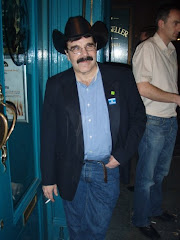Republican Politics, American Style
Published on January 15th in Metro Éireann By Charles Laffiteau
I closed last week’s column by noting that I arrived in New Delhi refreshed and eager to begin my Indian adventure thanks to a fortuitous free upgrade to a “bed” seat in the First Class section of my Qatar Airways flight from Doha to New Delhi
By the time I retrieved my bags and cleared Indian customs it was almost 5am, so I took the first of my two “conventional” taxi rides from the airport to my home away from home, the Hotel Empire, which is located in the Safdarjung Enclave not far from Jawaharlal Nehru University in southwestern New Delhi. It was a conventional taxi ride in that the taxi not only had a taxi sign, meter, doors and windows, but also air conditioning. For the balance of my stay in New Delhi the only other time I rode in a conventional taxi was on my return trip to Indira Gandhi International Airport three weeks later.
That was because I discovered these conventional taxis actually cost three to four times more per kilometer traveled than the ubiquitous door less, window less, green and yellow three wheel “rickshaws” that ply their trade throughout the city and the rest of the country. Now by way of comparison, the distance I traveled from the airport to the Hotel Empire is comparable to traveling from the Dublin Airport to the City Centre at a cost of only 400 Indian rupees or about 6 Euros. But covering the same distance in a rickshaw costs all of 100 rupees, approximately one and a half Euros.
Another interesting characteristic of both public and private transportation in New Delhi is the type of fuel they use. While the conventional petrol and diesel we use to fuel our cars and trucks here in Ireland is also used by many vehicles in New Delhi, compressed natural gas (CNG) is mandated for the public transport system of India’s capital. In fact the Dublin Bus equivalent, the Delhi Transport Corporation (DTC), actually operates the world's largest fleet of CNG powered buses.
But what I also noticed was that most of the rickshaws as well as many personal vehicles in New Delhi have also been converted to CNG. The cost of converting a gasoline vehicle to burn CNG runs about 600 to 700 Euros, but the fuel savings are immense since CNG only costs 19 Rupees or .29 Euros per kg compared with 56 Rupees or .86 Euros per liter for petrol. CNG is also much more environmentally friendly because using it instead of petrol and biofuels also drastically reduces CO2 carbon emissions without impacting the world’s food supply and pushing up food prices.
But while New Delhi appears to be ahead of many other cities in the US and Europe when it comes to addressing the problems associated with vehicular CO2 carbon emissions, it still has a long way to go as regards the condition of its road, bridge and mass transit infrastructure. If you think Ireland has problems with bumpy roads, mind-numbing traffic congestion and spotty rail service then just wait till you visit India. The main roads and paved side streets are uniformly bad with uneven surfaces, large cracks and numerous pot holes, some big enough to swallow a small child.
Some of the wider thoroughfares actually have painted stripes on the pavement to separate the lanes of traffic, but I view this as a waste of time and money since absolutely no one pays any attention to them. For instance, the main road in front of my hotel had three such traffic lanes, but as my photos taken from the front of a rickshaw show, drivers jam their vehicles five or six abreast into this 3 lane road space. The so called rush hour from 7 to 9am and 5 to 7pm when traffic is supposedly at its worst during the work week, is a bit of a misnomer since it actually starts around 6am and doesn’t let up till after 10pm. The only difference I could see between “normal” traffic and rush hour traffic was that traffic on the side streets moved a bit faster between 10am and 4pm and after 8pm.
Unlike Dublin bus passengers, New Delhi bus riders actually have different types of buses and fare levels to choose from. The cheapest fares are offered on older buses where passengers often ride on the roof or hang onto the sides and which appear to be held together by nothing more than string and baling wire. A higher fare will get you a spot to stand inside a newer and slightly less crowded bus while the newest and most expensive buses yield its passengers a seat or a place to stand in air conditioned comfort. Both DTC and privately owned and operated buses have color coded stripes on them which tell passengers the fare, which runs between two and ten Rupees (.03 to .15 Euros). By the way if you happen to be walking on a street and see one coming, be careful. The drivers not only drive very fast but they also have a tendency to run over pedestrians too.
New Delhi has a decent suburban rail system and an overcrowded Metro rapid transit system with a combination of elevated, at-grade and underground lines. But believe it or not, most of the Metro and railway stops are nowhere near any bus stops. I should also note that while I was in New Delhi, a partially built bridge designed as part of the Metro’s expansion collapsed, sending concrete and steel beams crashing down on several vehicles in a crowded neighborhood, killing 4 people and injuring another 20.
So while getting around New Delhi is relatively cheap by Irish standards, there is also a certain amount of risk involved. But whatever the drawbacks of public transportation are, they pale in comparison to taking your life into your own hands by renting or driving an automobile. I’ll discuss this and the sights of New Delhi next week.
Wednesday, April 1, 2009
Subscribe to:
Post Comments (Atom)



No comments:
Post a Comment